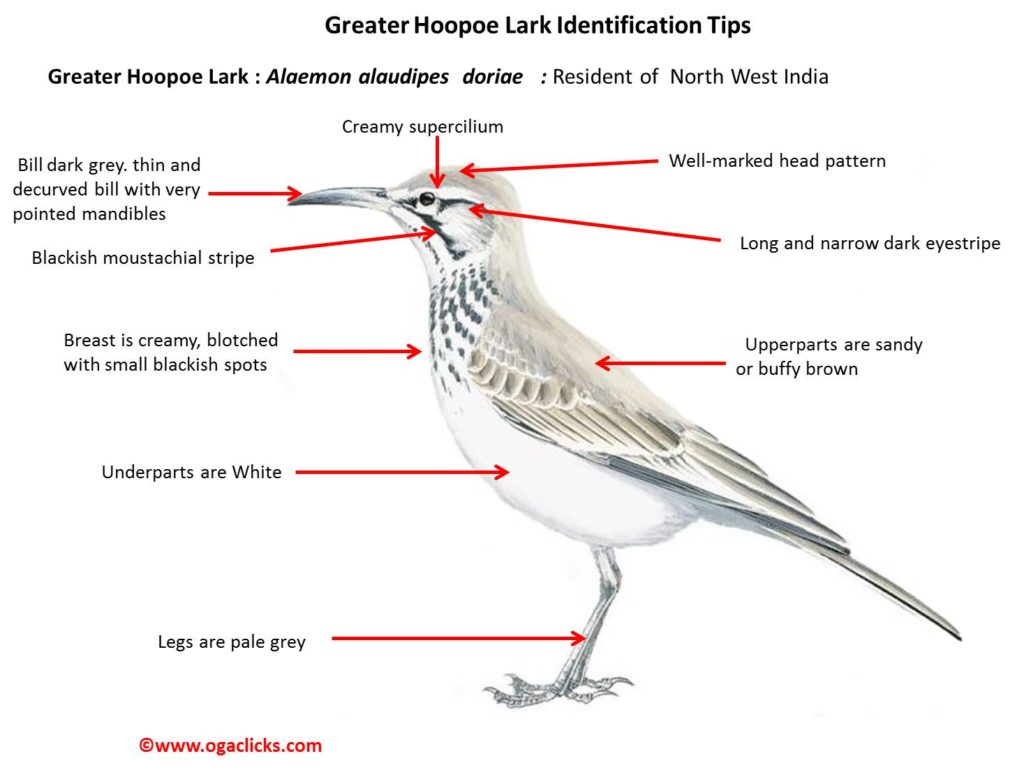
Greater Hoopoe Lark Alaemon alaudipes
Etymology:
- Alaemon : Greek word for Wandrer derived from alaomai to wander
- Alaudipes : Latin word alauda lark; pes foot
Vernacular Names: Guj: Rann chandul
Distribution in India: Resident in North West (espl Rann of Kutch) in India
Description: Size of 17-19 cm. It is a large, slim, elongated, long-legged lark with long, thin and decurved bill with very pointed mandibles; long and broad wings, rather long tail; hind claw short and slightly curved. The nominate race has well-marked head pattern, with creamy supercilium, long and narrow dark eyestripe, blackish moustachial stripe. It is sandy or buffy brown above, grey areas in center of forehead, central crown, nape and side of head. The primaries are black with white bases, tipped white, secondaries are white with broad black central band. The tail is blackish, central rectrices brown with broad paler buffy edges, outer rectrices mainly white; breast is cream coloured, blotched with small blackish spots, rest of underparts creamy white; eyes are dark brown; bill are dark grey; legs and feet pale grey. Both the sexes are similar.
Habitat: It is found in desert or semi-desert, in open plains or rolling terrain, with sandy soils and sparse vegetation cover; also in areas with mixture of gravel and sandy soils. Found in lowland areas up to 2000 m.
Food habits : It eats invertebrates and some small vertebrates, some seeds and green material. Main invertebrate groups eaten are beetle larvae, grasshoppers, termites, ant-lion larvae, and snails. Also eats small geckos and other lizards also eaten. It is normally found singly or in pairs. It digs in sand or soft soil to extract prey. Snails carried into air, then dropped on to hard surface like a stone to break the shell; shells also broken by being hammered against stone.
Breeding habits: They breed in Oct–Mar in Cape Verde Island; Feb–Jul, but also Oct in N Africa and Saudi Arabia; Mar–Jul in Pakistan and India. The mating display by male is a male song flight highly aerobatic, usually takes off from top of bush, with fluttering wings and spread tail, climbs steeply, twists over, often somersaulting, and dives back to same perch, opening wings just before landing. The nest is built by female, from small twigs, lined with soft material, placed on top of small shrub or grass tussock, more rarely on ground and then sheltered by a tussock or rock. When nest is on ground, it is rimmed with stones. They lay a clutch of 2–4 eggs. The incubation is done by female alone or by both sexes, beginning with last or penultimate egg. The incubation period is 14 days. The nestling period is 12–13 days. The young remain with parents for at least 1 month.